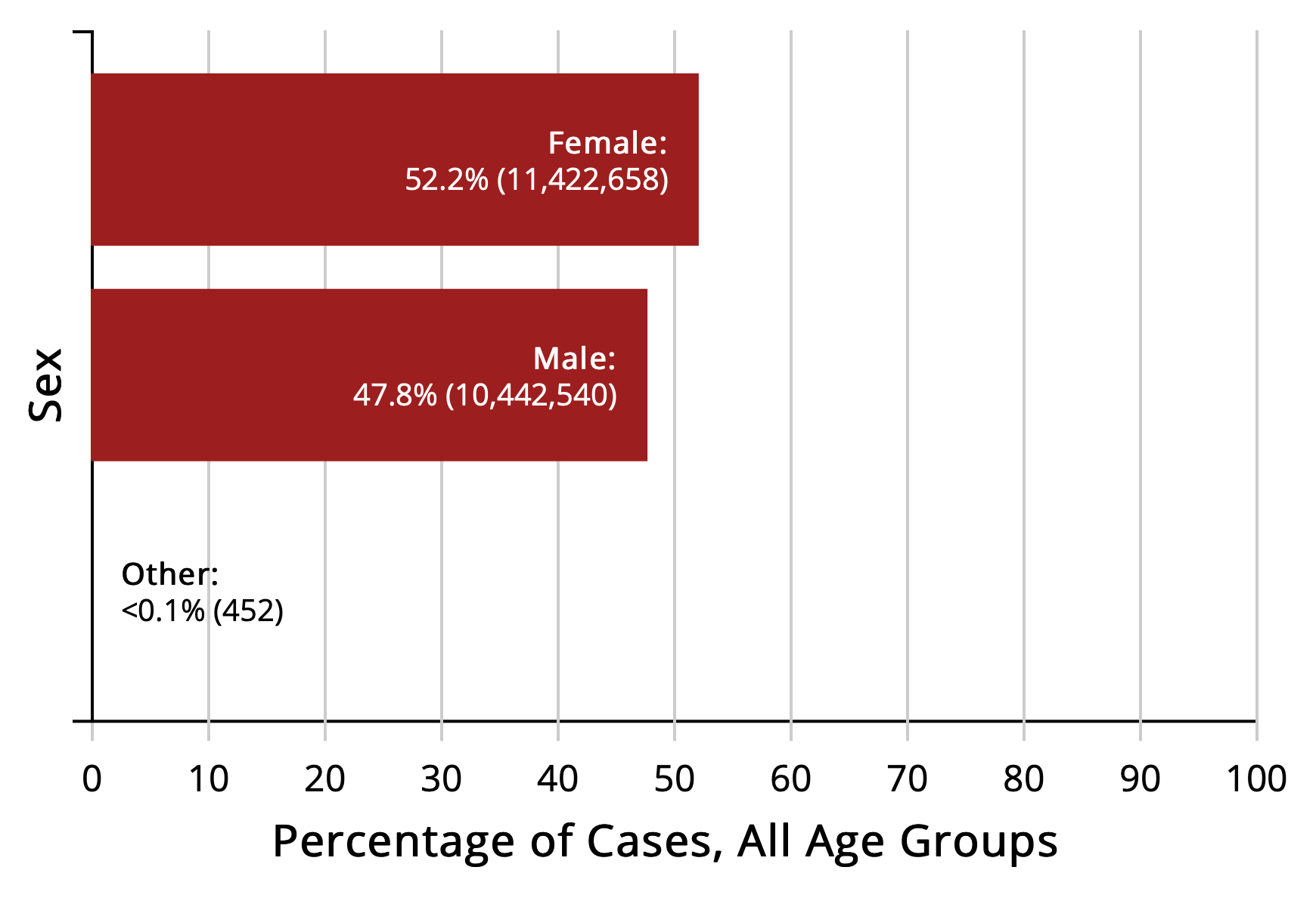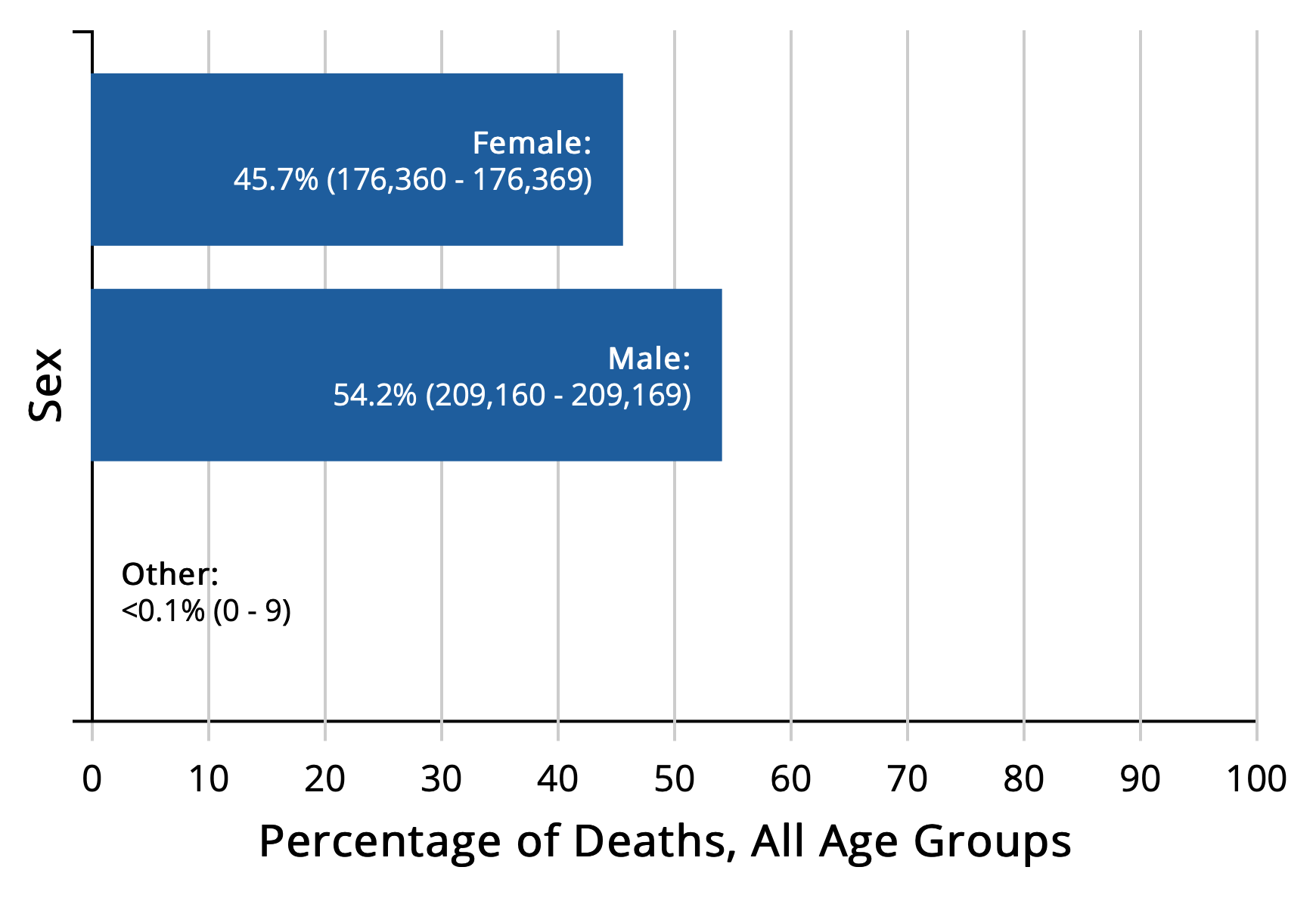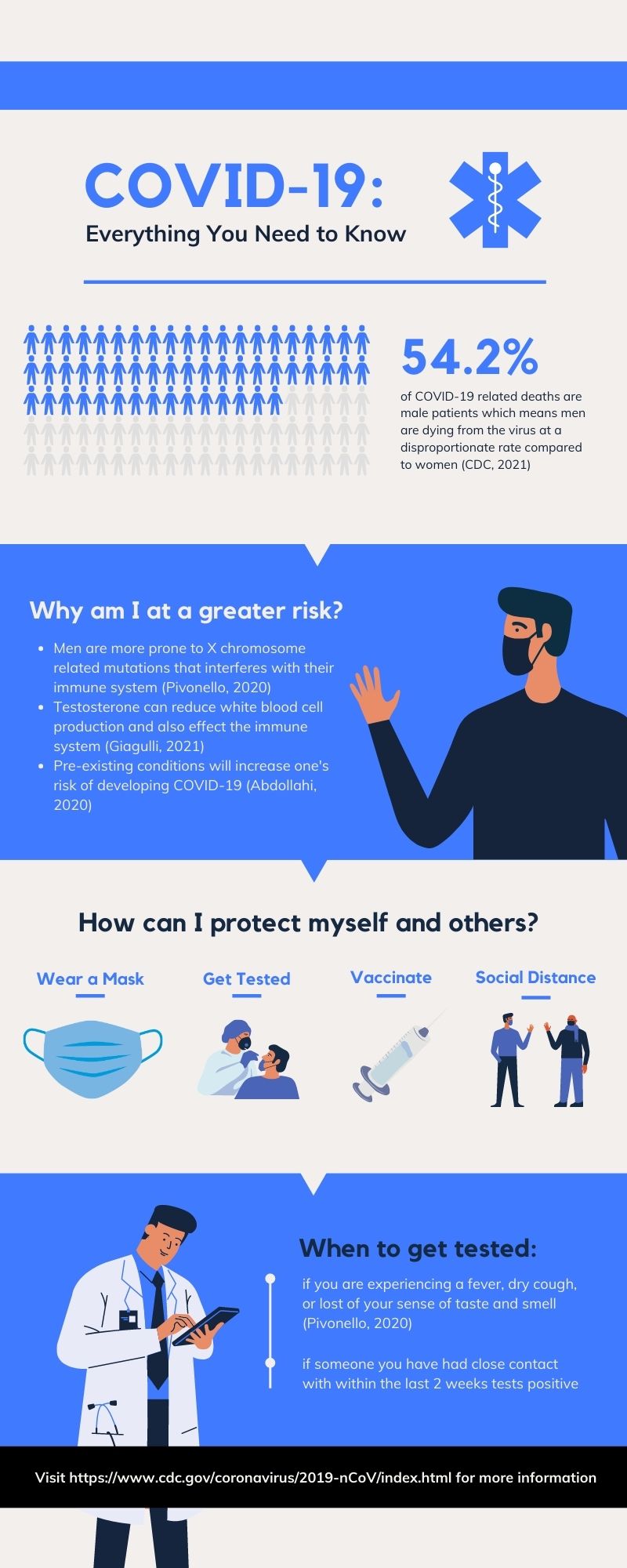21 COVID-19
Avery Morse
Introduction


The SARS-CoV-2 virus, also known as COVID-19, is a sickness that affects the respiratory tract. It was first discovered in 2019 and has spread across the entire world. Within a year, 27 million cases were reported in the United States. And of those, there were almost half a million deaths (Center for Disease Control, 2021). Research has found that men are dying from COVID-19 at a disproportionate rate when compared to women. In Italy, the death rate of men with COVID-19 was 13.3%, compared to 7.4% for women. (Pivonello et al., 2020). Because of this difference, it is important for men to know the symptoms, why they are at a greater risk, and how they can decrease the severity of COVID-19.
What Are COVID-19 Symptoms?
Some of the virus’s most common symptoms include fever, dry cough, headaches, loss of taste and/or smell, and digestive issues (Pivonello et al., 2020). Around 80% of cases will produce these mild to moderate symptoms (Giagulli et al., 2021). Some people will develop severe symptoms that lead to hospitalizations. This is much more common in older patients or those with pre-existing medical conditions (Giagulli et al., 2021). Other cases present as asymptomatic, which means that the person experiences no symptoms and therefore is unaware that they have the virus.
Why Are Men More at Risk for Severe Disease?
Men, compared to women, are at a biological disadvantage because of their immune system’s response to this type of virus. This means that men’s and women’s bodies react differently to the virus, simply because of sex differences. Many genes that are related to the immune system and someone’s response to germs are located on the X chromosome (Pivonello et al., 2020). Women have two X chromosomes, meaning if they have a mutation on one, it is possible that the other X chromosome will hide it. Since men only have one X chromosome, if they have a mutation that disrupts their immune response it cannot be hidden (Pivonello et al., 2020). Mutations on the Y chromosome, only found in men, can also suppress the immune system response (Pivonello et al., 2020).
Additionally, testosterone has a suppressive effect on the immune system. Women have small amounts of testosterone, but not nearly as much as men. Testosterone has been shown to reduce white blood cell levels which can decrease the production of immunoglobin E, which helps the body fight off bacteria, viruses, and allergens, and is therefore very important for someone to have when fighting COVID-19 (Giagulli et al., 2021).
How Can Men Prevent Becoming Infected With COVID-19?
Because of these biological disadvantages, men need to be more proactive about other health behaviors in order to decrease their risk of developing a severe case of COVID-19. Men are more likely to participate in risky behavior which can include behaviors like not wearing masks or social distancing that could expose them to the virus more often than women. Additionally, according to the CDC, more men have reported going to social gatherings during the pandemic than women (Griffith et al., 2020). Until the majority of the world is vaccinated, it is very important that everyone, but especially men, wear protective masks in order to minimize the risk of contracting and spreading the virus.
Not only does risky behavior pose a threat to men contracting the virus, but certain pre-existing conditions can also put men at risk. According to the Australasian Journal of Medicine, two separate studies performed in Italy and New York calculated the percentage of people who died from COVID-19 that had other medical conditions. In Italy, out of 355 deaths studied, only 1 person had no other existing conditions. In New York, over 13,000 people were included in the study and 89% of them had a chronic condition. These conditions included but were not limited to: hypertension, diabetes, coronary heart disease, chronic lung diseases, chronic kidney disease, and congestive heart failure (Cumming et al., 2020). Additionally, those with low vitamin D levels are predisposed to COVID-19. Those with this deficiency should take vitamin supplements to help boost their immune system function (Abdollahi et al., 2021). This means that men need to be more aware of their diet and negative health behaviors that can contribute to other diseases and therefore affect their likelihood of getting COVID-19.
The Importance of Vaccination
While there still is no cure for this deadly virus, vaccines are available to the general public, and they can help reduce the risk of a severe COVID-19 infection. Because of the contagious nature of COVID-19, it is very important for everyone to vaccinate, as long as they are able, in order to slow the spread of the virus. Some men can be resistant to vaccines because they can be costly, they can be painful, and they are uneducated about the benefits (Snyder, 2020). Vaccination rates can not only vary among males and females but also by ethnicity and race. Multiple studies found that around 20% of Mexican-American men regularly participated in getting the flu vaccine in 2015, which is a much lower percentage compared to other ethnic groups (Snyder, 2020). Because of this, it is important that healthcare and prevention strategies for COVID-19 target all groups of men and not generalize men into one category.

Chapter Review Questions
1. What is the most effective way to prevent a severe case of COVID-19?
A. Wearing a mask
B. Social distancing
C. Vaccination
D. Double-masking
2. What is an uncontrollable factor that puts men more at risk for contracting COVID-19?
A. Vitamin D levels
B. Mutations on chromosomes
C. Pre-existing conditions
D. Risky behaviors
3. How do chromosomes contribute to increased mutations on men’s genes?
A. Men only have one X chromosome, and it cannot be masked
B. Men’s Y chromosome has an increased likelihood of having a mutation
C. Men have more exposure to toxins that cause mutations compared to women
D. The mutations are due to higher levels of testosterone in the body compared to women
References
Abdollahi, A., Sarvestani, H. K., Rafat, Z., Ghaderkhani, S., Mahmoudi-Aliabadi, M., Jafarzadeh, B., & Mehrtash, V. (2021). The association between the level of serum 25(OH) vitamin D, obesity, and underlying diseases with the risk of developing COVID-19 infection: A case-control study of hospitalized patients in Tehran, Iran. Journal of Medical Virology., 93(4), 2359-2364. https://doi.org/10.1002/jmv.26726
Center for Disease Control. (2021). COVID data tracker. Retrieved February 14, 2021, from https://covid.cdc.gov/covid-data-tracker/#global-counts-rates
Cumming, R., Khalatbari-Soltani, S., Blyth, F. M., Naganathan, V., & Le Couteur, D. G. (2020). Not all older men have the chronic diseases associated with severe COVID‐19. Australasian Journal on Ageing, 39(4), 381–382. https://doi.org/10.1111/ajag.12839
Giagulli, V. A., Guastamacchia, E., Magrone, T., Jirillo, E., Lisco, G., De Pergola, G., & Triggani, V. (2021). Worse progression of COVID-19 in men: Is testosterone a key factor? Andrology, 9(1), 53–64. https://doi.org/10.1111/andr.12836
Griffith, D. M., Sharma, G., Holliday, C. S., Enyia, O. K., Valliere, M., Semlow, A.R., Stewart, E. C., & Blumenthal, R. S. (2020) Men and covid-19: A biopsychosocial approach to understanding sex differences in mortality and recommendations for practice and policy interventions. Preventing Chronic Disease, 17. http://dx.doi.org/10.5888/pcd17.200247
Pivonello, R., Auriemma, R. S., Pivonello, C., Isidori, A. M., Corona, G., Colao, A., & Millar, R. P. (2020). Sex disparities in covid-19 severity and outcome: Are men weaker or women stronger? Neuroendocrinology. https://doi-org.libproxy.clemson.edu/10.1159/000513346
Snyder, V., Garcia, D., Pineda, R., Calderon, J., Diax, D., Morales, A., & Perez, B. (2020). Exploring why adult mexican males do not get vaccinated: Implications for COVID-19 preventive actions. Hispanic Journal of Behavioral Sciences, 42(4), 515–527. https://doi-org.libproxy.clemson.edu/10.1177/0739986320956913
a relatively permanent change in hereditary material
continuing or occurring again and again for a long time

